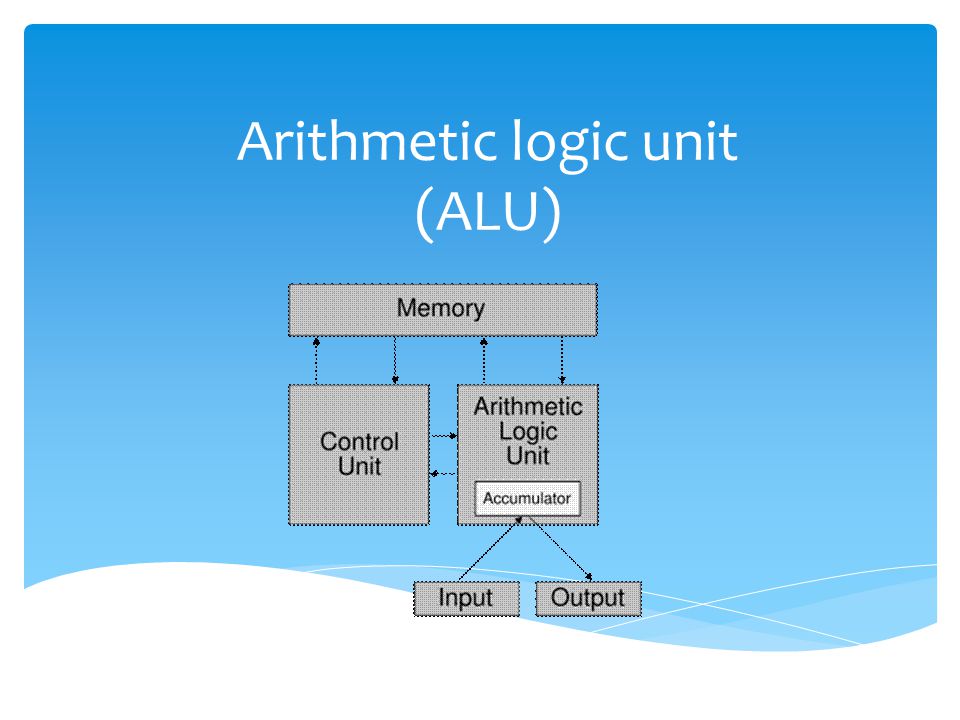


Meaning of Arithmetic Logic Unit (ALU)
An arithmetic-logic unit is the part of a central processing unit that carries out arithmetic and logic operations on the operands in computer instruction words.
In some processors, the ALU is divided into two units: an arithmetic unit (AU) and a logic unit (LU). Some processors contain more than one AU-for example, one for fixed-point operations and another for floating-point operations.
In computer systems, floating-point computations are sometimes done by a floating-point unit (FPU) on a separate chip called a numeric coprocessor.
History of ALU (Arithmetic Logic Unit)
In 1967, Fairchild introduced the first ALU implemented as an integrated circuit, the Fairchild 3800, consisting of an eight-bit ALU with accumulator. Other integrated-circuit ALUs soon emerged, including four-bit ALUs such as the Am2901 and 74181. These devices were typically "bit slice" capable, meaning they had "carry look ahead" signals that facilitated the use of multiple interconnected ALU chips to create an ALU with a wider word size. These devices quickly became popular and were widely used in bit-slice minicomputers.
How does an Arithmetic-Logic Unit Work
Typically, the ALU has direct input and output access to the processor controller, main memory (random access memory or RAM in a personal computer) and input/output devices. Inputs and outputs flow along an electronic path that is called a bus.
The input consists of an instruction word, sometimes called a machine instruction word, that contains an operation code or "opcode," one or more operands and sometimes a format code. The operation code tells the ALU what operation to perform and the operands are used in the operation.
For example, two operands might be added together or compared logically. The format may be combined with the opcode and tells, for example, whether this is a fixed-point or a floating-point instruction.
The output consists of a result that is placed in a storage register and settings that indicate whether the operation was performed successfully. If it isn't, some sort of status will be stored in a permanent place that is sometimes called the machine status word.
In general, the ALU includes storage places for input operands, operands that are being added, the accumulated result (stored in an accumulator) and shifted results. The flow of bits and the operations performed on them in the subunits of the ALU are controlled by gated circuits.
The gates in these circuits are controlled by a sequence logic unit that uses a particular algorithm or sequence for each operation code. In the arithmetic unit, multiplication and division are done by a series of adding or subtracting and shifting operations.